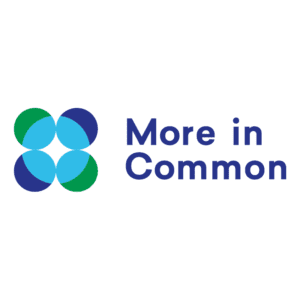Today, nearly 9 in 10 Americans say this is the most divided our country has felt in their lifetime. The division is political — much more than it is racial, generational, or class-based — and as the 2020 election nears, the animosity is likely to reach a crescendo.
The political debate has also expanded, sprawling into the domains of entertainment, religion, and commerce. Together, these dynamics create an environment where business leaders will be increasingly drawn into the fray.
Executives may be tempted to try to keep their heads down and avoid political entanglements, but such a strategy is unwise and unworkable — regardless of sector or market. Instead, business leaders should proactively take action to reduce political conflict within their organizations, with their customers, and among the broader public. Although daunting, there are clear steps business leaders can take to play such a role.
The first step is to anticipate and prepare for political conflict emerging from internal sources. More in Common’s research on polarization in the United States, documented in our Hidden Tribes report, describes how politics has become a clash between differing worldviews and deeply held moral identities. As evidenced most visibly by the high-profile walkouts in several tech companies, employees are bringing these identities into the workplace. Internal protests are not mere disagreements over details; they are motivated by a broader pursuit of values such as justice and equality. Beyond skirmishes between staff and senior management, tensions will rise between employees, especially as political discussions become more frequent via social media. These moments will become more frequent in 2020; business leaders need to address them intentionally as a leadership and culture challenge.
A best practice for leaders is to engage employees in conversations about the election year proactively, noting that it will be tense and emotional for many. It is crucial not to allow the loudest voices to dominate any particular conversation, but rather to nurture spaces for constructive engagement. Avoid minimizing or dismissing employees’ views and instead focus on identifying shared values within the organization. Monitor effects on employee well-being and morale by using internal surveys and other resources to spot the emergence of intimidation or hostile dynamics that may not be immediately visible.
A second source of political conflict is external parties, such as vocal consumers and online activists. Pressure campaigns from across the ideological spectrum are not new. However, the emerging trend is that such campaigns are less about a single product or company decision and more about which political “side” the company is on. The intense judgment and high visibility of such campaigns create substantial tension for employees, leadership, and partners.
Responding to external groups will be more complicated in 2020 because the traditional tools — PR, communications, and public affairs — may have less reach in the crowded media context and less impact against the tide of sentiment. Best practice for 2020 includes preparing for and actively communicating with your teams and leadership about how you plan to respond to potential pressure campaigns and emphasizing that responses will be consistent with the values discussions you are leading internally.
Business leaders need to be wary of overreacting: one of More in Common’s key findings is that those most politically active on social media represent narrow, more ideologically extreme viewpoints. The majority of your external stakeholders are likely not participating in any activist campaigns, and you do not want to lose sight of this in the heat of the moment. Successfully avoiding polarizing actions will add credibility to your effort to demonstrate a consistent set of values, internally and externally.
Finally, and perhaps most importantly, another key source of conflict to consider is yourself. How are you, as an individual and leader, navigating this polarized moment? Whether you are politically active in your personal life or not, too often leaders fail to appreciate the stress that our national conflict places on their own psychology. This can lead to situations where impulsive decisions undermine the trust and confidence of your team, customers, and other partners. Reflecting on how you, as an individual, can best manage the myriad sources of stress the political situation creates for you in this polarized moment is just as important as planning your organizational approach to these challenges.
There is a storm coming in 2020. Weathering the storm will require prudent planning and thoughtful leadership. Emerging sounder and stronger after the storm, however, will demand business leaders seize on opportunities provided to engage their teams, their customers, and other stakeholders in a dialogue about values, character, and aspirational norms. It will require attention to one’s health and that of your teams and partners. This is a demanding set of challenges, but also an opportunity for leaders to steward their teams — and potentially our country — toward calmer, better shores.
Stephen Hawkins is director of research at More in Common and leads studies on polarization and division in the United States and across Europe. Dan Vallone is director of More in Common USA. www.MoreInCommon.com




































